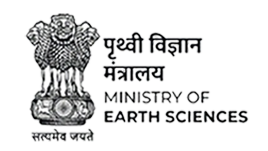









| Abstract Submission No. | ABS-12-0478 |
| Title of Abstract | Primary productivity for sustainable marine fishery resources ¿ a precursor for blue economy |
| Authors | Rupam Kalita*, Aneesh Anandrao Lotliker |
| Organisation | Indian National Centre for Ocean Information Services (INCOIS) |
| Address | Pragathi Nagar Hyderabad, Telangana, India Pincode: 500090 E-mail: r.kalita-rf@incois.gov.in |
| Country | India |
| Presentation | Poster |
| Abstract | The sustainable use of marine natural resources is critical for Blue Economy. India has over 8000 km of coastline with an enormous potential for marine fishery resources. Several people living along the coastline primarily depend on fishery resources for their livelihood. Identifying the appropriate fishery resources in the sea is always a difficult task with a lot of human efforts and burning fossil fuels. The Indian National Centre for Ocean Information Services (INCOIS) provides advisories on the potential fishing zone (PFZ) that helps fishermen to locate fish aggregation, thereby reducing the search time and less burning of fossil fuels. Thus, these advisories are meant to improve profitability and socio-economic status. Presently the advisories are based on the satellite-retrieved sea surface temperature and chlorophyll-a, which is considered to be the index of primary productivity. With the recent advancement of satellite technology and novel bio-optical algorithms, it is possible to retrieve primary productivity from satellites directly. Therefore, generating PFZ advisories directly from satellite-based primary productivity will provide a significant reduction in data processing. In this study, the climatology of the PFZ lines were generated at a seasonal scale using 10 years of data. Further, the variability of five primary productivity models (VGPM, Eppley-VGPM, CbPM, CAFE and SABPM) were evaluated across PFZ lines in off Kochi and Visakhapatnam. The frequency-density distribution of PFZ lines revealed the highest concentration in the shelf region along the 200m bathymetry with significant variability at the seasonal scale. Further, the comparison with in-situ data indicates better performance of the CbPM model with a correlation of 77% and an estimated error of 38%. Moreover, it was observed that the primary productivity was higher in nearshore waters, gradually decreasing further offshore towards the PFZ lines. In the Visakhapatnam area, the CAFE estimation exhibited a negative correlation in all seasons except JJAS, where Eppley-VGPM showed a strong correlation. The study is a precursor for providing primary productivity-based fishery advisory for proper harvesting, thus boosting the blue economy. |
| Keywords | Fishery, Primary Productivity, model, satellite, algorithm |
| For Awards | yes |